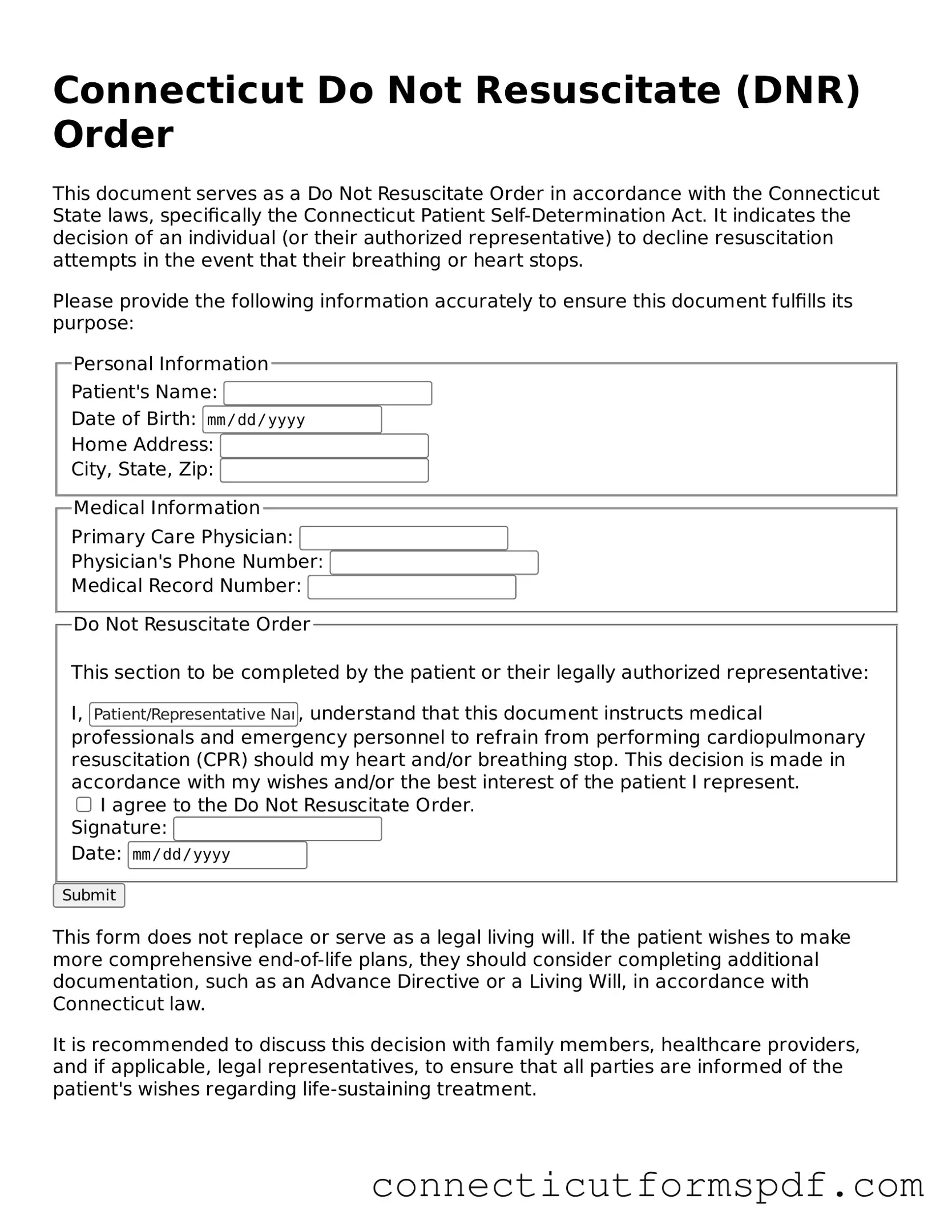Connecticut Do Not Resuscitate Order Form
A Connecticut Do Not Resuscitate (DNR) Order form is a legal document that instructs medical professionals not to perform cardiopulmonary resuscitation (CPR) if a patient's heart stops or they stop breathing. This form is used by individuals who wish to refuse CPR in the event of a cardiac or respiratory arrest, ensuring their medical and end-of-life preferences are respected. To ensure your wishes are clearly communicated during an emergency, consider filling out this form by clicking the button below.
Launch Editor Now
